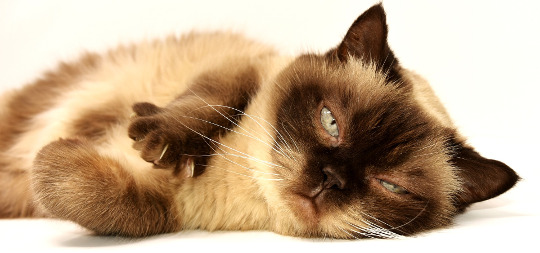
Domesticated cats are mysterious and fascinating animals.
Unlike their more predictable four-legged canine counterparts, cats go by the beat of their own drum. Razor-sharp reflexes, superhero-like agility, yet they sleep sixty percent of the time.
While we may not be able to truly understand the feline psyche, there is no shortage of wonder, amazement, and sometimes disbelief. One thing remains, cats are very near and dear to our hearts.
Let’s delve into a few common cat myths, shall we?
Cats Can Steal Your Breath
It has been a long-held belief that cats and sleeping babies don’t mix well, as it can increase the risk of infant death. While the risk is certainly there, it’s not for the reasons many believe.
For a long time, common knowledge suggested cats will sleep nose-to-nose with a baby and out-breathe their oxygen. The actual, and more likely threat is that of a kitty resting too close to a vulnerable infant’s face; if the baby is unable to move their head to safety, their breathing may be compromised. Cats naturally seek warm, comfy places, and a baby’s crib is as cozy as it gets.
You Can’t Walk a Cat
Imagine walking your cat down your street, complete with harness and leash. This may seem like a bizarre dream, but for many cats, walking on leash can actually be enjoyable.
Cats love the outdoors, and letting them roam free in the neighbourhood can be risky; encounters with wild animals, vehicles, etc. In many municipalities, free-roaming cats are illegal.
Of course, every cat is different. Any cat’s favourite activity is nails-on-the-chalkboard to another. With cats, leash training can be frustrating, and it can also be very rewarding. Above anything, leash training takes lots of patience, especially if you are introducing this change to an adult cat. Kittens are much more easily impressionable.
Always use a properly fitted cat harness for walking, as a collar can damage their sensitive neck. Plus, a cat can easily slip out of their collar.
You can’t toilet train a cat
See ya later, kitty litter!
Yes. Cats can be toilet trained. They hop on the toilet seat, do their business, and get on with their day.
Believe it or not, cats all over the world are trained to use a toilet. Toilet training is growing in popularity, especially for those living in small quarters where litter box smell can be overwhelming.
Yet toilet training a cat is still relatively unknown. Some cats even flush when they’re done! I know, sounds too good to be true, but it is a reality for many cat owners.
There are some great toilet training products on the market made just for cats – the most popular brand being the Litter Kwitter. Alternatively, there are many great videos and tutorials online to help cat owners with their toilet training regimen.
You Can’t Teach a Cat Tricks
Cats can learn tricks, for sure! Although the approach to training a cat is different from dogs, cats can still learn common tricks like roll over, fetch, and more.
Cats are highly intelligent animals. The key to cat training is figuring out what motivates your cat, and nurturing that stimulus. The process requires more patience versus training dogs, but with consistency and positive reinforcement, the sky is the limit!
Cats Show Off Their Kill
If your cat spends any time outside the home, there’s a good chance she will eventually bring you a ‘present’. It could be a mouse, a bird, or any other small critter. Cats are exceptional hunters; they barely have to try.
While many believe this behaviour is a cat’s way of showing off their hunting prowess, many cat experts believe it’s actually meant as a message. Your cat is trying to show you how to hunt; she thinks you’re a bad hunter.
Cats Can Eat Dog Food
Cat food is distinctly higher in protein than dog food, and generally contains less produce and grains. Cats are obligate carnivores, meaning they’re designed to consume and digest high volumes of meat. Don’t worry if your kitty sneaks a few bites of dog food here and there, but a cat cannot thrive on a food formulated for dogs.
It’s all about taurine. For cats, taurine is an essential amino acid that can only be obtained through their diet – it is not naturally produced in their body like other mammals. Lack of taurine in cats can lead to several health problems, including blindness, dental health issues, and more.
Stay tuned next week as we debunk the most popular myths about small animals.
Brandon Forder – also known as The Pet Expert – is vice-president of Canadian Pet Connection, a family-owned and -operated business located in Meaford. He has over twenty-five years of experience specializing in pet nutrition, behaviour, and lifestyle. Canadian Pet Connection is an industry leader committed to providing their clients with the highest levels of personal, attentive service. Learn more at www.CanadianPetConnection.ca











